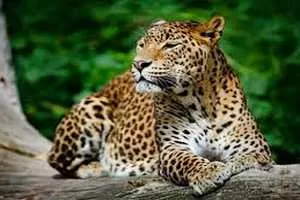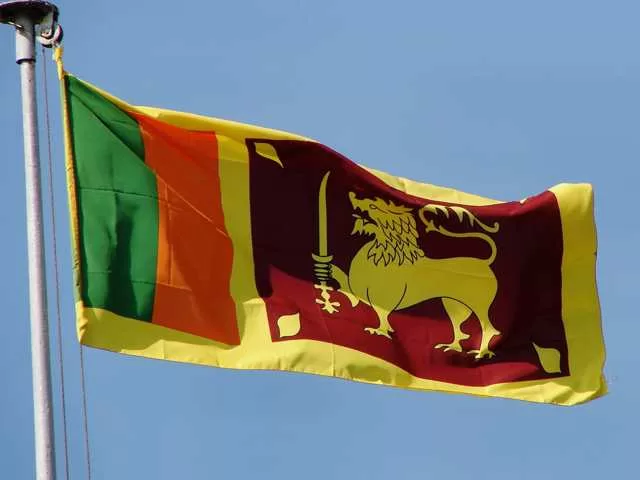In the chronicles of nations, Sri Lanka stands as a testament to resilience and transformation. On this day in 1948, Ceylon gained independence from British rule, marking the birth of a sovereign state. Fast forward to 1972, and a new identity emerged as Ceylon evolved into Sri Lanka, a name encapsulating the island’s resplendence.
Nestled off India’s coast, Sri Lanka boasts a warm, tropical climate and a diverse ecosystem, featuring elephants, leopards, deer, buffalo, monkeys, and six-foot-long giant monitor lizards. However, beyond its natural beauty, the island grapples with a complex sociopolitical landscape.
Home to the Sinhalese and Tamil, Sri Lanka’s history is marred by tensions between these two prominent ethnic groups. While the nation claims democratic principles, constitutional gaps have led to the majority overpowering minority rights. Issues like flag choices and language preferences have echoed a Sinhalese dominance, sparking debates about national identity.
The Tamil, concentrated in the northern region, have long sought independence. Yet, the Sri Lankan government has resisted, leading to a protracted civil war from 1983 to 2009, causing loss and displacement. The aftermath left scars, both physical and emotional, prompting some Tamils to seek refuge abroad.
Questions persist: Should nations easily allow splinter groups to secede? Does adopting a specific language or religion as national exclude others? Are concerns about second-class citizenship merely sensitivity? The answers remain elusive, highlighting the complexity of such issues.
Despite these challenges, Sri Lanka boasts noteworthy achievements. In 1960, Sirimavo Bandaranaike made history, becoming the world’s first female prime minister. Her legacy shattered gender norms, inspiring future leaders globally.
Additionally, Sri Lanka became the adopted home of the legendary Arthur C. Clarke, a pioneer in science fiction and space exploration. Living there from 1956 until his passing in 2008, Clarke’s works like “2001: A Space Odyssey” and “Childhood’s End” left an indelible mark on the genre.
As Sri Lanka continues its journey, it stands as a nuanced tale of triumphs and tribulations, a nation etched in the annals of history, its future waiting to be inscribed.
Animals of Sri Lanka
Sri Lanka, with its diverse ecosystems and rich biodiversity, is home to a wide variety of animals. The island’s geographical location, between the Indian subcontinent and Southeast Asia, contributes to its unique wildlife. Here are some notable animals found in Sri Lanka:

- Sri Lankan Elephant (Elephas maximus maximus): The Sri Lankan elephant is one of the three recognized subspecies of the Asian elephant. It is an iconic species in Sri Lanka and can be found in various habitats, including national parks and protected areas.
- Leopard (Panthera pardus kotiya): The Sri Lankan leopard, or “kotiya,” is the country’s top predator. Yala National Park is known for having a relatively high density of leopards, offering wildlife enthusiasts a chance to spot these elusive cats.
- Sloth Bear (Melursus ursinus inornatus): The sloth bear is another charismatic mammal found in Sri Lanka. These bears have a shaggy coat and can often be seen foraging for insects in national parks like Wilpattu and Yala.
- Purple-Faced Langur (Semnopithecus vetulus): This endemic primate species is recognizable by its striking facial markings. The purple-faced langur inhabits forested areas and is often seen in groups, swinging through the trees.
- Toque Macaque (Macaca sinica): Another primate endemic to Sri Lanka, the toque macaque is known for its distinctive toque-shaped hair. These monkeys can be found in a variety of habitats, including urban areas.
- Saltwater Crocodile (Crocodylus porosus): In mangrove ecosystems and estuaries, you can find the saltwater crocodile. These large reptiles are excellent swimmers and are known to inhabit certain coastal areas.
- Indian Star Tortoise (Geochelone elegans): The Indian star tortoise is a beautifully patterned reptile found in the dry zone of Sri Lanka. Unfortunately, it faces threats due to the illegal pet trade.
- Ceylon Frogmouth (Batrachostomus moniliger): Among the diverse bird species in Sri Lanka, the Ceylon frogmouth is a nocturnal bird with distinctive appearance resembling a tree branch. Birdwatchers often seek out this species in the forested areas.
- Blue Whale (Balaenoptera musculus): Sri Lanka is one of the best places globally for observing blue whales. Mirissa and Trincomalee are known for whale-watching, offering opportunities to witness these magnificent marine mammals.
- Ceylon Spiny Mouse (Mus fernandoni): This small rodent is endemic to Sri Lanka and is known for its spiky fur. It inhabits scrublands and grasslands across the island.
These are just a few examples of the incredible biodiversity found in Sri Lanka. The country’s commitment to conservation through its national parks and wildlife reserves plays a crucial role in protecting and preserving these diverse animal species.
Frequently Searched Questions
What is the capital city of Sri Lanka?
The capital city of Sri Lanka is Colombo.
What is the official language of Sri Lanka?
The official languages of Sri Lanka are Sinhala and Tamil.
What is the currency used in Sri Lanka?
The currency used in Sri Lanka is the Sri Lankan Rupee (LKR).
What are the major tourist attractions in Sri Lanka?
Some popular tourist attractions include Sigiriya, Kandy, Galle, Nuwara Eliya, Yala National Park, and the ancient city of Anuradhapura.
Is Sri Lanka a safe country for tourists?
Sri Lanka is generally considered safe for tourists, but it’s advisable to check travel advisories and take necessary precautions.
What is the best time to visit Sri Lanka?
The best time to visit Sri Lanka is during the dry season, which typically occurs from December to March on the west coast and from April to September on the east coast.
Do I need a visa to visit Sri Lanka?
Yes, most travelers to Sri Lanka require a visa. The type of visa depends on your nationality and the purpose of your visit.
What is Sri Lankan cuisine known for?
Sri Lankan cuisine is known for its use of spices and flavors. Some popular dishes include rice and curry, hoppers, kottu, and various seafood delicacies.
Are there any cultural festivals in Sri Lanka?
Yes, Sri Lanka celebrates various cultural festivals, including Sinhala and Tamil New Year, Vesak (Buddha’s Birthday), and Esala Perahera in Kandy.
What wildlife can be seen in Sri Lanka?
Sri Lanka is home to diverse wildlife. Visitors can see elephants, leopards, birds, and marine life. Yala National Park is famous for its leopard population.
How is the weather in Sri Lanka?
Sri Lanka has a tropical climate. There are two monsoon seasons: the southwest monsoon (May to September) and the northeast monsoon (December to March).
What is the time zone of Sri Lanka?
Sri Lanka Standard Time (SLST) is 5 hours and 30 minutes ahead of Coordinated Universal Time (UTC+5:30).

